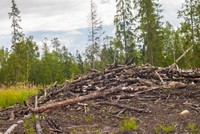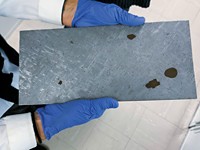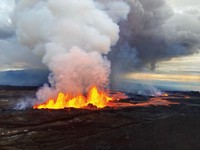Advertisement
Grab your lab coat. Let's get started
Welcome!
Welcome!
Create an account below to get 6 C&EN articles per month, receive newsletters and more - all free.
It seems this is your first time logging in online. Please enter the following information to continue.
As an ACS member you automatically get access to this site. All we need is few more details to create your reading experience.
Not you? Sign in with a different account.
Not you? Sign in with a different account.
ERROR 1
ERROR 1
ERROR 2
ERROR 2
ERROR 2
ERROR 2
ERROR 2
Password and Confirm password must match.
If you have an ACS member number, please enter it here so we can link this account to your membership. (optional)
ERROR 2
ACS values your privacy. By submitting your information, you are gaining access to C&EN and subscribing to our weekly newsletter. We use the information you provide to make your reading experience better, and we will never sell your data to third party members.
Biological Chemistry
What’s that Stuff
What is petrified wood, and how does wood turn to stone?
No Medusa required
by Sarah Braner
June 14, 2024
| A version of this story appeared in
Volume 102, Issue 18

Fossilization is an invaluable process for gaining a window into the past, but it can also create a tripping hazard.
The way Angela Piller, collections manager at the Rice Northwest Museum of Rocks and Minerals, tells it, Mary Murphy was on a dig for petrified wood when she stepped out of her camper and promptly tripped over a pinecone. A regular pinecone wouldn’t be nearly heavy enough to actually make someone take a tumble, but this was no ordinary pinecone: this sample was millions of years old and had been turned to stone by minerals, water, and time.
Murphy and her husband, Dennis, from whom the majority of the museum’s petrified wood collection is loaned, were avid collectors of petrified wood. But “she never ever would have noticed [the pinecone],” unless she stumbled over it, Piller says. “It doesn’t look like anything different. It would just blend in with any other pinecone on the ground.”
Petrified wood and its fossilized pinecone siblings can often look like regular wood until you handle them and realize they are much, much heavier and harder than you might expect.
One of the museum’s displays is a hearth with logs of petrified wood, and Piller recounts that the fire marshal had to make sure it wasn’t an operational fireplace. “Not only is it not operational, but that’s not wood,” she says with a chuckle.
How does wood become a fossil?
Petrified wood is classified as a fossil, with some samples dating to hundreds of millions of years ago. Essentially, the material is wood with its biological components replaced by minerals: mostly silica but sometimes fluorite, pyrite, or calcite.
“Normally, a tree falls in the forest and then it gets eaten by insects, it rots away, there’s bacterial processes: all these things, all those normal things would take place. So, for petrified wood to form, you have to have those processes not take place, or they have to take place so slowly,” says Piller. Two conditions are required for petrified wood to form: an anoxic environment to stop decomposition, and exposure to water saturated with minerals.
One common way for those conditions to come together is during a volcanic eruption. For example, imagine a tree falls into a lake and sinks to the bottom, and then a volcano erupts nearby. Usually, when a volcano erupts and lahars—or streams of organic and volcanic debris like lava and water—flow through a forest, the trees and plants will simply burn up. But if a lake sits in the path of that lava flow, the lahars can cover the water and then cool, creating a cap over the lake and trapping the wood from the fallen tree in an area with little to no oxygen. This does two things: First, the wood will decay much slower than wood left exposed to the air because the organisms that contribute to the decay are starved of oxygen. Second, minerals carried by water will eventually seep through the lava cap and slowly replace the fibrous wood materials. This replacement happens at the cellular level, preserving details like the texture of bark and rings in tree trunks.
But a volcanic eruption is not strictly necessary. Something like a mudslide, where a log is covered in mud, may also aid in petrifying the wood. Similar processes can also happen to tree components like pinecones and walnuts; one fossilized hazelnut at the museum is only a few millimeters across, less than half the size of a grain of rice.
But you likely won’t find fossilized wood just sitting on the ground. Just like other fossils, petrified wood needs to be dug up and freed from the sediment that blankets it from oxygen. If left exposed to the elements, petrified wood tends to erode; just as with regular rocks, water and animals can cause parts to break off. In the case of Murphy tripping on the fossilized pinecone, she had been digging at that site and had presumably unearthed the find without realizing—but if you trip over something on a hike, it’s most likely a regular old rock.
Identifying the species of tree that has been petrified takes knowledge of both geology and biology, and often a microscope to look at the cell structure. But one can guess where a sample comes from by using information about what tends to form where. For example, petrified wood from Arizona is often tinted red because of iron entering the wood along with silica.
Do-it-yourself fossilization
If you want to make petrified wood yourself, you can—as long as you have access to an argon furnace. In 2004, Yongsoon Shin and colleagues at the Pacific Northwest National Laboratory replicated the petrification process in the lab using pine and poplar wood. They published their results in the journal Advanced Materials(2005, DOI: 10.1002/adma.200400371). The researchers immersed wood samples in a hydrochloric acid solution for 2 days and then in a silica-containing solution for 2 days, after which they observed a coating of silicon dioxide on the wood’s cellular structure. After air-drying the samples, the team heated them to 1,450 °C in an argon furnace, completing the petrification process. In their paper, the researchers note that wood could serve as a useful template for creating complex ceramic materials at extremely small scale, as the silica could recreate the existing cellular structure of the wood.

But if you don’t have access to a lab-grade furnace and want to acquire some petrified wood anyway, just be sure to check your area’s regulations surrounding rockhounding, the casual term for collecting rocks and petrified wood as a hobby. While collecting a small amount on US public land supervised by the Bureau of Land Management is usually permitted, rockhounding is generally not allowed in national parks or on private land.
Like other fossils, petrified wood gives scientists a lens into what an area may have looked like millions of years ago. Not only does the petrification process preserve the wood itself, but it can also preserve footprints of ecological movement; in one candlewood piece in the museum’s collection, the direction of water flow into the wood has been captured like a photo. But while the petrified wood that we have available to study has taken eons and eons to form, that’s not to say all samples are relegated to the distant past. More recent events could create conditions to yield more petrified wood in the future.
“If you think about how Mount Saint Helens erupted and had big ash lahars, that would be a great way to bury something and preserve petrified wood,” Piller says. “I really bet that there’s gonna be some great petrified wood in a few million years.”






Join the conversation
Contact the reporter
Submit a Letter to the Editor for publication
Engage with us on Twitter